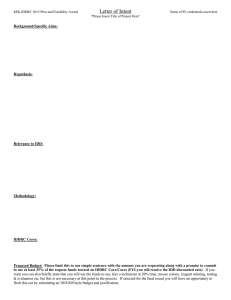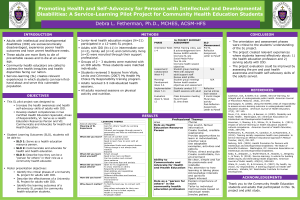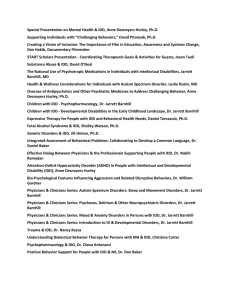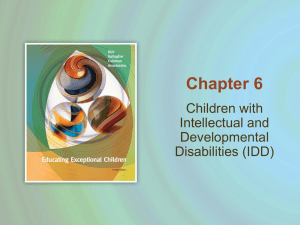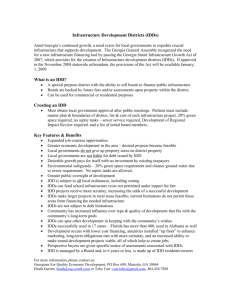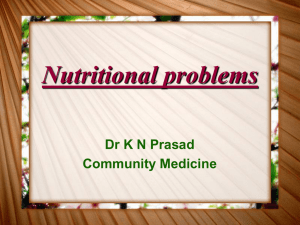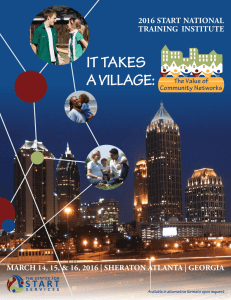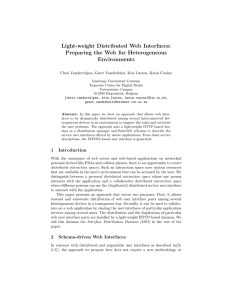- AUCD Home
advertisement
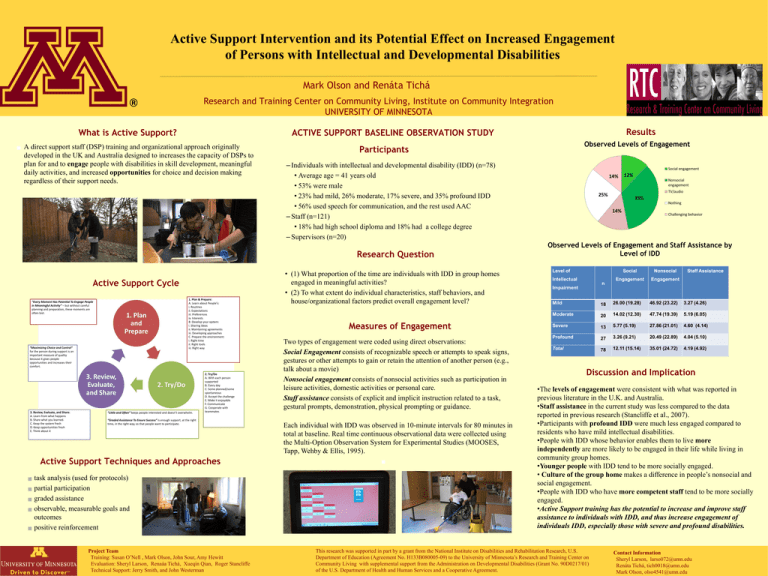
Active Support Intervention and its Potential Effect on Increased Engagement of Persons with Intellectual and Developmental Disabilities Mark Olson and Renáta Tichá Research and Training Center on Community Living, Institute on Community Integration UNIVERSITY OF MINNESOTA What is Active Support? A direct support staff (DSP) training and organizational approach originally developed in the UK and Australia designed to increases the capacity of DSPs to plan for and to engage people with disabilities in skill development, meaningful daily activities, and increased opportunities for choice and decision making regardless of their support needs. Participants Active Support Cycle 1. Plan & Prepare: A. Learn about People’s: i. Routines ii. Expectations iii. Preferences iv. Interests B. Develop your system: i. Sharing ideas ii. Maintaining agreements iii. Developing approaches C. Prepare the environment: i. Right time ii. Right tools iii. Right way “Maximizing Choice and Control” for the person during support is an important measure of quality because it gives people opportunities and increases their comfort. 3. Review, Evaluate, and Share: A. Learn from what happens B. Share what you learned. C. Keep the system fresh D. Keep opportunities fresh E. Think about it “Little and Often” keeps people interested and doesn’t overwhelm. 2. Try/Do A. With each person supported B. Every day C. Some planned/some spontaneous D. Accept the challenge E. Make it enjoyable F. Communicate G. Cooperate with teammates “Graded Assistance To Ensure Success” is enough support, at the right time, in the right way, so that people want to participate. Active Support Techniques and Approaches task analysis (used for protocols) partial participation graded assistance observable, measurable goals and outcomes positive reinforcement Project Team Training: Susan O’Nell , Mark Olson, John Sour, Amy Hewitt Evaluation: Sheryl Larson, Renaáa Tichá, Xueqin Qian, Roger Stancliffe Technical Support: Jerry Smith, and John Westerman Observed Levels of Engagement – Individuals with intellectual and developmental disability (IDD) (n=78) • Average age = 41 years old • 53% were male • 23% had mild, 26% moderate, 17% severe, and 35% profound IDD • 56% used speech for communication, and the rest used AAC – Staff (n=121) • 18% had high school diploma and 18% had a college degree – Supervisors (n=20) Research Question “Every Moment Has Potential To Engage People in Meaningful Activity” – but without careful planning and preparation, these moments are often lost. Results ACTIVE SUPPORT BASELINE OBSERVATION STUDY Observed Levels of Engagement and Staff Assistance by Level of IDD • (1) What proportion of the time are individuals with IDD in group homes engaged in meaningful activities? • (2) To what extent do individual characteristics, staff behaviors, and house/organizational factors predict overall engagement level? Measures of Engagement Two types of engagement were coded using direct observations: Social Engagement consists of recognizable speech or attempts to speak signs, gestures or other attempts to gain or retain the attention of another person (e.g., talk about a movie) Nonsocial engagement consists of nonsocial activities such as participation in leisure activities, domestic activities or personal care. Staff assistance consists of explicit and implicit instruction related to a task, gestural prompts, demonstration, physical prompting or guidance. Each individual with IDD was observed in 10-minute intervals for 80 minutes in total at baseline. Real time continuous observational data were collected using the Multi-Option Observation System for Experimental Studies (MOOSES, Tapp, Wehby & Ellis, 1995). Discussion and Implication •The levels of engagement were consistent with what was reported in previous literature in the U.K. and Australia. •Staff assistance in the current study was less compared to the data reported in previous research (Stancliffe et al., 2007). •Participants with profound IDD were much less engaged compared to residents who have mild intellectual disabilities. •People with IDD whose behavior enables them to live more independently are more likely to be engaged in their life while living in community group homes. •Younger people with IDD tend to be more socially engaged. • Culture of the group home makes a difference in people’s nonsocial and social engagement. •People with IDD who have more competent staff tend to be more socially engaged. •Active Support training has the potential to increase and improve staff assistance to individuals with IDD, and thus increase engagement of individuals IDD, especially those with severe and profound disabilities. This research was supported in part by a grant from the National Institute on Disabilities and Rehabilitation Research, U.S. Department of Education (Agreement No. H133B080005-09) to the University of Minnesota’s Research and Training Center on Community Living with supplemental support from the Administration on Developmental Disabilities (Grant No. 90D0217/01) of the U.S. Department of Health and Human Services and a Cooperative Agreement. Contact Information Sheryl Larson, larso072@umn.edu Renáta Tichá, tich0018@umn.edu Mark Olson, olso4541@umn.edu
